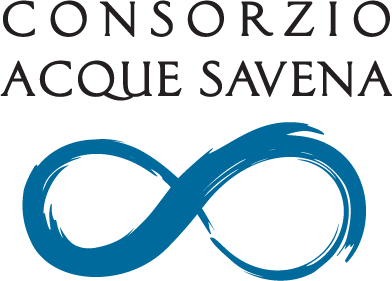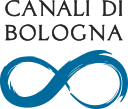Consorzio degli Interessati nelle Acque del Canale di Savena

History
The Consorzio degli Interessati nelle Acque del Canale di Savena is a body whose origin dates back to the beginning of the 18th century. It was established in its present form in 1887 with the aim of ensuring the best use and fairest distribution of the water among the interested parties, the supervision and maintenance of the waterworks, the removal of the rainwater from the area served and the sharing of the costs among the users based on their respective interests. It therefore manages water that flows through the area in the artificial system.
The headquarters of the consortium is located in Via della Grada 12 in Bologna. Management is ensured by the Consortium Board composed of 15 members representing the entire body of interested parties, which meets every two years in a General Assembly. An Assunteria consisting of five members and a chairperson is elected within the Board of Delegates. Together they carry out the ordinary management of the consortium. No compensation is paid to persons holding consortium administrative offices. The governing bodies are made up exclusively of direct interested parties called consortium members. The consortium includes all those involved with the waterworks of the Savena canal in Bologna, both for the derivation and use of water as well as for drainage. The income used to achieve statutory purposes comes solely from consortium contributions, without any external financing.
Working to ensure the best distribution of water and the disposal thereof during particularly adverse weather events, the consortium deals with the water management of the area supplied by its artificial system. For this reason it works to ensure the preservation and efficiency of the works within its purview and shares the expenses for their maintenance and management among all interested parties.
There are numerous peculiarities that distinguish the Consorzio degli Interessati nelle Acque del Canale di Savena from other organisations. The waterworks managed are owned by the consortium and are not the property of the state, the municipality or HERA Group. The area within its purview is exclusively urban, even if the water conveyed by the artificial system feeds a large area requiring irrigation. Today the primary focus is environmental use. The function as a natural gutter has gained increasing importance, the system therefore being able to collect and dispose of the water of the entire area served.
Notwithstanding the waterworks' long history, the consortium has adapted over time to the changing needs of the area and the different demands of the people who live and work there. For example, the rainwater can be kept separated from sewerage, thus achieving a containment of the water used and an improved efficiency of the treatment plant (IDAR), both factors that facilitate the reuse of wastewater, thereby contributing to the improvement of the environment. Another example is the possibility to lay cable throughout the city by making use of the extensive consortium network, i.e. using the waterworks to lay optical fibre or transmission cables.
The main consortium waterworks are the Fiaccacollo and the Sentiero, together with a dense network of secondary and tertiary pipelines. The main dividers are located in the current Via Castiglione, Porta Santo Stefano, Piazza Verdi and Via Irnerio.
The area covered by the consortium's waterworks consists of the sector of the city between the city walls and the right bank of the Aposa stream. This area uses the artificial water grid as a natural gutter, and in synergy with the sewerage system it ensures the removal of water exceeding normal production. In fact, it is precisely the consortium's management of its waterworks which, thanks to the works it maintains and supervises, guarantees a balance in the supplied area.
The transported waters are joined to those derived from the Reno river, and together they feed the Navile - Savena Abbandonato system and their pipelines. The consortium's area still includes some industrial uses (heat exchangers) as well as irrigation for patrician gardens.
A peculiarity of this system is the cleaning service provided by its own water in the bed of the Aposa stream, which crosses the entire city and constitutes the western border of the consortium area.
Governing bodies
Chairman
Jadranka Bentini
Consortium Council or Board of Delegates
Representatives of the consortium members
Consisting of 15 members
Pietro Maria Alemagna
Sandro Artina
Adele Bassi
Jadranka Bentini
Valerio Boschi
Filippo Cattaneo
Francesco Ceccarelli
Rudi Fallaci
Guido Franchi Scarselli
Valeria Gualandi
Milena Naldi
Stefano Pezzoli
Benedetta Scardovi
Caterina Secchi
Giovanni Zamboni Gruppioni
Assunteria or Board of Directors
Composed of 5 members
Selected from among the 15 Managing Directors
Pietro Maria Alemagna
Sandro Artina
Jadranka Bentini
Francesco Ceccarelli
Stefano Pezzoli
Secretary
Andrea Bolognesi






